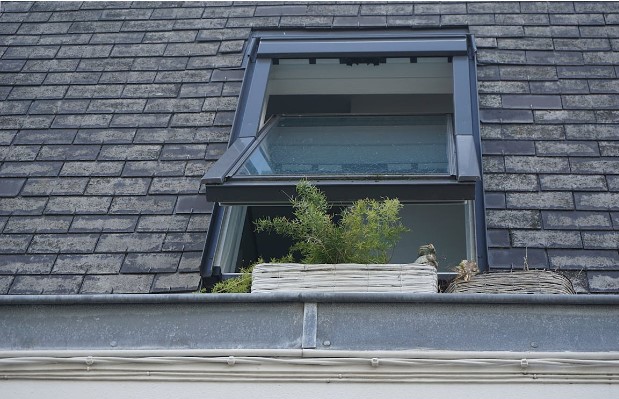Your roof is one of the most crucial parts of your home, shielding you from the elements and maintaining the structural integrity of your house. However, over time, it can suffer from wear and tear. Understanding how to repair your roof is essential, whether you’re looking to save money or simply want to know more about home maintenance. In this practical guide, we will walk you through everything you need to know about roof repair, from identifying problems to hiring professionals and tackling smaller projects yourself.

Hiring Professionals for Roof Repair
When it comes to roof repair, there are certain situations where hiring a professional becomes imperative. While minor fixes like replacing a few shingles can often be managed with a bit of DIY spirit, more complex issues such as widespread damage, leaks that have caused structural deterioration, and problems involving chimney flashing or gutter work require expert intervention. The risks and potential hazards associated with these tasks can easily surpass the capabilities of an average homeowner. If you’re unsure whether a job is too big to handle on your own, it’s critical to evaluate the extent of the damage responsibly. For detailed guidelines on identifying these more serious issues, click here to find out why and when it’s best to call in professionals. This ensures the safety of your home and family while guaranteeing that your roof is repaired to last.
Identifying Roof Damage
Before you can repair your roof, you need to identify the problem areas. Regular inspections are key to catching issues early before they escalate into costly repairs. Start by checking for visible signs of damage, both inside and outside your home. Look for water stains on your ceilings and walls, which can indicate a leak. Outside, examine your shingles for signs of wear and tear, such as curling, cracking, or missing pieces. Pay attention to the flashing around chimneys, vents, and skylights, as these areas are prone to leaks. Don’t forget to inspect your attic. Poor ventilation can lead to moisture buildup, resulting in mold and mildew. If you notice any dampness, mold, or a musty smell, it’s a sign that your roof may need attention. Regular inspections can help you catch these problems early and address them before they cause significant damage.
DIY Roof Repair Tips
For those who prefer a hands-on approach, there are several DIY roof repair tasks you can tackle yourself. However, it’s essential to approach these projects with caution and proper preparation to ensure your safety and the effectiveness of the repairs. Start by gathering the right tools and materials. You’ll need a sturdy ladder, safety harness, gloves, and protective eyewear. For minor repairs, such as replacing a few shingles, you can find the materials at your local hardware store. Make sure you choose shingles that match your existing roof to maintain a uniform appearance.
When replacing shingles, remove the damaged ones by lifting the edges and prying out the nails. Slide the new shingle into place and secure it with roofing nails. Seal the edges with roofing cement to ensure a watertight seal. For small leaks, apply roofing tape or sealant to the affected area. Remember, safety should always be your top priority, so if a task feels too risky, don’t hesitate to call in a professional.
Preventative Roof Maintenance
Preventative maintenance is crucial for extending the lifespan of your roof and avoiding costly repairs. By taking proactive measures, you can keep your roof in good condition and ensure it continues to protect your home effectively. One of the simplest yet most effective maintenance tasks is cleaning your gutters regularly. Clogged gutters can lead to water buildup, which can seep under your shingles and cause leaks. Trim any overhanging branches to prevent debris from accumulating on your roof and causing damage.
Regularly inspect and clean your roof to remove moss, algae, and debris. These can trap moisture and lead to rot and deterioration. Consider applying a moss and algae-resistant treatment to your roof to prevent regrowth. Additionally, make sure your attic is well-ventilated to prevent moisture buildup and reduce the risk of mold and mildew.
Understanding Roof Repair Costs
Understanding the costs associated with roof repair is essential for budgeting and making informed decisions. Several factors can influence the cost of repairs, including the extent of the damage, the materials used, and the complexity of the job. Minor repairs, such as replacing a few shingles or fixing small leaks, are relatively inexpensive. However, more extensive damage, such as structural issues or widespread water damage, can be costly. The type of roofing material also plays a role in the overall cost. Asphalt shingles are generally more affordable, while materials like metal or tile can be more expensive.
When to Consider Roof Replacement
While regular maintenance and timely repairs can extend the life of your roof, there comes a point when replacement is necessary. Knowing when to replace your roof can save you from ongoing repair costs and potential damage to your home.
Several factors can indicate that it’s time for a roof replacement. Age is a significant consideration; most asphalt shingle roofs last between 20 to 25 years. If your roof is approaching or exceeding this age, it’s wise to start planning for a replacement. Additionally, if you notice widespread damage, such as large areas of missing shingles, extensive leaks, or significant structural issues, it’s likely more cost-effective to replace the roof entirely.

Repairing your roof is a critical aspect of home maintenance that ensures the safety and comfort of your living space. Whether you choose to hire professionals or tackle minor repairs yourself, understanding the process and taking proactive measures can save you time and money in the long run. Regular inspections, preventative maintenance, and knowing when to consider a replacement are all essential components of effective roof care.
For those looking to take the next step, consider booking a consultation with a reputable roofing contractor to assess your roof’s condition and discuss your repair or replacement options. By staying informed and proactive, you can protect your investment and enjoy a safe, comfortable home for years to come.






